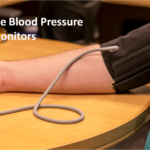Are you tired of tossing and turning in bed, unable to drift off into a restful slumber? Do you find yourself staring at the ceiling, night after night, longing for a good night’s sleep? If so, you’re not alone. Many people struggle with sleep issues, but there’s hope. Cognitive-Behavioral Therapy for Insomnia (CBT-I) techniques offer a practical and effective way to improve your sleep quality. In this article, we’ll break down what CBT-I is and how you can use it to unlock peaceful nights.
Understanding CBT-I
CBT-I is a fancy term, but don’t let it intimidate you. At its core, it’s a structured approach that helps you identify and change the thoughts and behaviors that are hindering your ability to sleep well. The idea is to replace those sleep-disruptive habits with healthier ones.
Identify the Culprits
The first step in CBT-I is to identify the factors that are messing with your sleep. This can include stress, anxiety, poor sleep habits, or even medical conditions. Keeping a sleep diary can be a helpful tool to track your sleep patterns and pinpoint the issues.
Sleep Restriction
One key component of CBT-I is sleep restriction. It might sound counterintuitive, but if you’re not sleeping well, spending less time in bed can actually improve your sleep. By limiting the hours you spend in bed, you’ll create a stronger association between your bed and sleep. Over time, you can gradually increase your sleep time as your sleep improves.
Stimulus Control
Stimulus control is another CBT-I technique that helps reprogram your brain to associate your bed with sleep rather than wakefulness. This involves going to bed only when you’re sleepy and leaving your bedroom if you can’t sleep after 20-30 minutes. You should return to bed only when you’re feeling sleepy again.
Sleep Hygiene
CBT-I also emphasizes good sleep hygiene practices. This means creating a sleep-conducive environment by keeping your bedroom dark, quiet, and cool. Avoid stimulating activities before bedtime, like watching TV or using your phone, as these can interfere with sleep.
Challenge Negative Thoughts
CBT-I also addresses those racing thoughts that can keep you up at night. It teaches you to challenge and reframe negative thoughts about sleep. Instead of worrying about not sleeping, focus on the relaxation and comfort that lying in bed can provide.
Consistency is Key
Consistency is crucial when practicing CBT-I techniques. It may take time to see improvements, so be patient and stick to your plan.
Seek Professional Help
While self-help CBT-I techniques can work for many, it’s important to note that they might not be suitable for everyone, especially if your sleep issues are severe or linked to underlying mental health concerns. In such cases, seeking help from a trained therapist or healthcare professional who specializes in CBT-I is advisable.
Conclusion
In a world filled with distractions and stress, achieving sound sleep can seem elusive. However, by harnessing the power of CBT-I techniques, you can gradually transform your sleep patterns and unlock the door to peaceful nights. Remember, it’s all about identifying the factors that disrupt your sleep, making positive changes, and being consistent in your efforts. With time and practice, you can enjoy the restful sleep you deserve, night after night. Sweet dreams!










